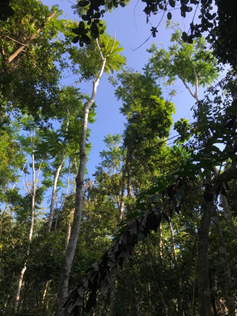A Brief Introduction to Sentang Tree
Malaysia is known as one of the mega biodiversity countries in the world, place of living for thousands of animal and plant species. One native species from Malaysia is Azadirachta excelsa, locally known as Sentang. This species belongs to Malieaceae family and commonly called as Limpaga or Rang-gu by Sabahan and Sarawakians.
Sentang tree has a fast growth rate and thus recommended by the Ministry of Forestry of Peninsular Malaysia as one of the species for forest plantation establishment. As in natural habitat, this species usually found growing well in a lowland area to 350 m altitude with a good drainage water system due to its intolerance to the waterlogging. The physical features of Sentang tree is looks similar to Petai, however, Sentang tree indicated by its smooth, little fissured and pinkish-grey bole surface, alternate leaves arrangement and asymmetrical leaflets shape.
Previously, Sentang tree was not attracting much attention from the villagers or the government agencies, until the species was promoted as a suitable tree for establishing forest plantation in Malaysia. After that, many government agencies, private companies, and small holder organizations began to plant Sentang tree from a small-scale to a large-scale of forest plantation. Sentang tree has slightly bitter, edible young shoots used as food and traditional medicine by the villagers since a long time ago. Therefore, this species is also commonly planted by the villagers along the roadside or inside their farm as a windbreaker tree to protect their farm from a strong wind.
Sentang wood is classified as light- to medium-hardwood and a mature Sentang tree has a high market value due to its excellent workability, which is ease to shaping with either hand tools or wood working machines, and moderate mechanical properties. Thus, Sentang wood is widely used as a raw material to produce veneer, particleboard, pulp and paper, furniture as well as for wooden house and building construction purpose.
Dr Andi Hermawan






/alumni.png)